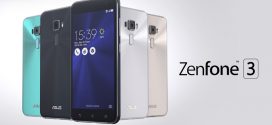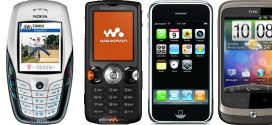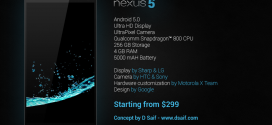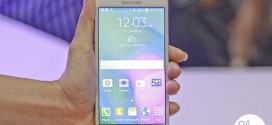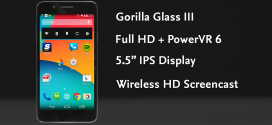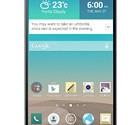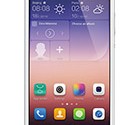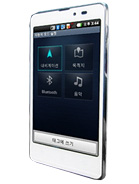 Today we’ll be taking a look at the LG Optimus LTE Tag. This is a fairly powerful 4G phone. The only drawback of the LG Optimus LTE Tag is the fact that it is area-restricted. It will only come out for the South Korean market. Other than that it is a pretty good phone with some decent hardware and a whole lot of features. Since I don’t like wasting too much time with long intros, let us commence this little review.
Today we’ll be taking a look at the LG Optimus LTE Tag. This is a fairly powerful 4G phone. The only drawback of the LG Optimus LTE Tag is the fact that it is area-restricted. It will only come out for the South Korean market. Other than that it is a pretty good phone with some decent hardware and a whole lot of features. Since I don’t like wasting too much time with long intros, let us commence this little review.
SUMMARY
As I promised some time in the past, I will always start off my articles by reviewing, in as few words as possible, what the phone is good at and what it is bad at. The LG Optimus LTE Tag is a phone that looks positively awesome and is extremely thin and wide, as if it was pulled from a futuristic Sci-Fi movie. The good parts of this phone is that it has a decent configuration, it is 4G and it looks stunning. The bad parts about this phone are that the LG Optimus LTE Tag lacks a few necessary hardware components ( necessary to those who want to use the phone for gaming or for video demanding apps, other than that the phone is okay ). That’s about all I’ll say for this part, if you want to know more I urge you to keep on reading.
GENERAL
We’ll begin by taking a look at the more general aspects of the LG Optimus LTE Tag. Here you can find out things such as the supported networks and announcement and release dates. The LG Optimus LTE Tag supports, as I already said, 4G networks, as well as 2G and 3G ones. Those networks are as following : 2G ( CDMA 800 and CDMA 1900 ), 3G ( CDMA 2000 1xEV-DO and HSDPA 2100 ) and 4G ( LTE 800 ). The LG Optimus LTE Tag was announced in February 2012 and oddly enough, it has yet to come out. More so, it is set to come out somewhere around Q3 of 2012. That’s about it for the general stuff, so let’s move on now to the next part of the review.
BODY
Next up we’ll be taking a look at the aspect of the LG Optimus LTE Tag. Here you can find out a bit about the size and weight of the device as well as see whether or not the LG Optimus LTE Tag has any particularities related to the body that might set it apart from the other phones. The LG Optimus LTE Tag is around 126.5 x 67.9 x 9.5 mm big. This phone also weighs somewhere around 141.7 grams. The LG Optimus LTE Tag also has Touch-Sensitive Controls instead of frontal buttons. That’s about all there is to the aspect of the LG Optimus LTE Tag, so let’s move on now to the next part, as there still is quite a bit to go till the end of this little review.
DISPLAY
Next up we’ll be taking a look at the display of the LG Optimus LTE Tag. Here you can find out a thing or two about the screen type, the screen size, the screen’s resolution and pixel density as well as see whether or not the LG Optimus LTE Tag has any screen protection and any particularities that might make it stand out from a crowd. The LG Optimus LTE Tag has a HD-IPS LCD capacitive touchscreen with around 16 million colors. The screen size of this phone is around 4.3 inches and it can house a resolution of around 480 x 800 pixels. The pixel density of the LG Optimus LTE Tag is around 217 ppi, which is pretty good, in my opinion. This phone also has Multitouch on it, however, it’s not the advanced sorts of multitouch that can support more than two simultaneous fingers on the screen. Sadly, the LG Optimus LTE Tag has no other features aside from these and no screen protection installed on it, so you’ll have to be extra careful with the handling of this phone. That’s about it for the display, so let’s move on now to the next part.
SOUND
Next up we’ll be taking a quick look at the audio output capabilities of the LG Optimus LTE Tag. Here you can find out a thing or two about whether or not the device has any sound enhancement whatsoever installed on it, be it software-based or otherwise. The LG Optimus LTE Tag has indeed a most effective sound enhancement on it, that being Dolby Mobile Sound Enhancement. Other than that, I don’t see much reason continuing with this part since most people already know that Android phones can use any audio effect for Alert Types and have both Loudspeakers and 3.5 mm jacks. So that being said, let us move on now to the next part.
MEMORY
Next up we’ll be taking a brief look at the memory of this phone. Here you can find out a bit about the RAM of the device, the internal storage space and see whether or not said storage space can be expanded and how. The LG Optimus LTE Tag has 1 GB of RAM, which is pretty good. It would have been the best a while ago, but the old limit of 1 GB has been raised to 2 GB with the announcement and appearances of a few phones that have that amount of RAM. The internal storage space of the LG Optimus LTE Tag is 16 GB. If by some ungodly reasons you require more storage space, know that the LG Optimus LTE Tag also has a Micro SD card slot that allows the usage of any Micro SD card of up to 32 GB. That’s about all that can be said for this part, so let’s move on now to the next part.
DATA CONNECTION
Next up we’ll be taking a brief look at the connectivity of the LG Optimus LTE Tag. Here you can find out a bit about the GPRS and EDGE of the device, the Speed and WLAN and the Bluetooth, USB and other ( if any ) connections. The LG Optimus LTE Tag doesn’t have neither GPRS nor EDGE, since this is a 4G phone after all and 4G phones usually lack both GPRS and EDGE. The Speed of hte LG Optimus LTE Tag is a Rev. A of up to 3.1 MB/s and it is also measured in HSDPA and LTE. The WLAN of the LG Optimus LTE Tag is a Wi-Fi 802.11 b/g/n with Wi-Fi Direct, DLNA and Wi-Fi hotspot. This phone also has Bluetooth v3.0 with A2DP and HS on it. Also, the LG Optimus LTE Tag is a phone that supports NFC, for those of you concerned about such things. The USB port of the LG Optimus LTE Tag is a Micro USB v2.0 ( MHL ) one. That’s about it for the connectivity of this phone, so let’s move on now.
CAMERA
Next up we’ll be taking a look at the camera of the LG Optimus LTE Tag. Here you can find out a bit about the main and secondary cameras ( if any ) as well as their features and capabilities. The main camera of the LG Optimus LTE Tag is a 8 MP snapper which can photograph at resolutions of around 3264 x 2448 pixels. The features of this camera are as following : autofocus, LED flash, geo-tagging, face detection and image stabilization. This camera can also record video although it isn’t mentioned at what quality ( although, in any case, my sources claim it’s a 5 MP camera however that resolution is only for 8 MP ones ). What we do know about the video recorder is that it also has LED video light. The secondary camera of the LG Optimus LTE Tag is a 1.3 MP one with no features of its own, so it’s not worth discussing. That being said, let us move on now to the next part of this review.
BATTERY LIFE
Next up we’ll be taking a brief look at the battery life of the LG Optimus LTE Tag since we know that battery is usually a really large issue with Android devices. Here you can usually find out about the battery type of this device and see how long said battery can function. The battery of the LG Optimus LTE Tag is a 1700 mAh bettery. Sadly, I can’t say how long this battery can function since it isn’t specified. Not having anything else to say for this part, let us move on now to the next part of the review.
HARDWARE
Next up we’ll be taking a look at the hardware of the device. Here you can find out a bit of info about the three main hardware components : processor, graphics card and motherboard. Unfortunately, the LG Optimus LTE Tag only has one of the three – a processor : a Dual-Core 1.2 GHz processor. This is a pretty good processor, however, one can only wonder how well this phone is going to run without a notable motherboard or a graphics card. That’s enough here, so let’s go to the next part.
SOFTWARE
Next up we’ll be taking a brief look at the OS of the LG Optimus LTE Tag. Here you can find out a few details about the software version of the device as well as see whether or not the phone is upgradable to a better version, or if it even needs an upgrade. The LG Optimus LTE Tag has Android OS v2.3 Gingerbread on it. Fortunately for us, it is already known that the phone will be upgradable to v4.0 Ice Cream Sandwich when it comes out. That being said, let us move on now to the final part of this review.
FEATURES
Last but not least, we’ll be taking a look at the features of the LG Optimus LTE Tag. The messaging on this phone can be done via : SMS ( with Threaded View ), MMS, E-Mail, Push Mail, IM and RSS. The browser of this phone uses WAP 2.0/xHTML, HTML and has integrated support for Adobe Flash. Unfortunately, the LG Optimus LTE Tag has no radio, however, you can find an article around that teaches you what to do in that situation. The LG Optimus LTE Tag also has a GPS with A-GPS support. Unfortunately, and this is something I rarely see, the LG Optimus LTE Tag has no Java on it. This phone is available in the following colors : Black and White.
Here is a brief list of what the LG Optimus LTE Tag can do:
- Customizable Tag+ NFC stickers
- TV-Out (via MHL port)
- Active noise cancellation with dedicated mic
- SNS applications
- MP4/H.264/H.263/WMV/DviX player
- MP3/WMA/WAV/FLAC/eAAC+/AC3/DTS player
- True HD movie editor
- Document viewer/editor
- Organizer
- Voice memo/dial/commands
- Predictive text input
This concludes our little review of the LG Optimus LTE Tag. If you feel that anything is lacking from this review feel free to leave your suggestions in the comment section below for things which should be added and I will be sure to take them into consideration when writing my future projects. In the meantime, I sincerely hope you had as much fun reading my little review as I had writing it.


